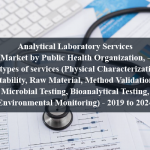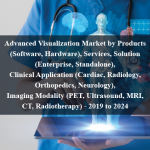OVERVIEW
The Companion Diagnostics Market is projected to grow significantly from USD 8.2 billion in 2024 to an estimated USD 14.3 billion by 2029, reflecting a CAGR of 12.1% during the forecast period. Companion diagnostics are medical devices and tests used to identify patients who are most likely to benefit from a specific therapeutic product, or those who are likely to experience adverse reactions. This market includes various diagnostic technologies, such as polymerase chain reaction (PCR), next-generation sequencing (NGS), immunohistochemistry (IHC), and in situ hybridization (ISH). The increasing prevalence of cancer and other chronic diseases, advancements in precision medicine, and the growing demand for personalized treatments are driving the market’s growth.
The market’s expansion is also supported by rising healthcare expenditure, increased awareness of precision medicine, and the integration of advanced technologies in companion diagnostics. However, challenges such as high costs of companion diagnostic tests, stringent regulatory requirements, and the complexity of integrating diagnostic and therapeutic development need to be addressed to sustain market growth.
Geographically, North America and Europe dominate the companion diagnostics market due to their advanced healthcare infrastructure, significant investments in precision medicine, and high adoption rates of innovative diagnostic technologies. The Asia Pacific region is also expected to witness substantial growth, driven by increasing healthcare expenditure, growing awareness of personalized medicine, and the expanding healthcare sector.
Market Dynamics
Drivers:
The primary driver of the Companion Diagnostics Market is the increasing prevalence of cancer and other chronic diseases. Cancer, in particular, has seen a significant rise in incidence globally, necessitating more precise and effective treatment options. Companion diagnostics play a crucial role in identifying the most suitable therapies for cancer patients by analyzing specific genetic mutations and biomarkers. This enables personalized treatment plans that improve patient outcomes and minimize adverse effects. Additionally, advancements in diagnostic technologies, such as NGS and PCR, are enhancing the accuracy and efficiency of companion diagnostics, further driving market growth.
Another significant driver is the growing demand for personalized medicine. Personalized medicine aims to tailor medical treatment to the individual characteristics of each patient, taking into account their genetic profile, environment, and lifestyle. Companion diagnostics are integral to this approach as they provide the necessary information to match patients with the most effective treatments. The integration of advanced technologies, such as AI and machine learning, is further enhancing the capabilities of companion diagnostics, enabling more accurate and comprehensive analysis of patient data. The rising focus on personalized medicine and the continuous advancements in diagnostic technologies are driving the growth of the companion diagnostics market.
Key Opportunities
The Companion Diagnostics Market presents numerous opportunities for growth and innovation, particularly in the development and integration of advanced technologies. One prominent opportunity lies in the increasing use of next-generation sequencing (NGS) in companion diagnostics. NGS allows for the comprehensive analysis of genetic mutations and alterations in patient DNA, providing valuable insights into the molecular mechanisms of diseases. The integration of NGS with companion diagnostics is expected to drive market growth by enabling more accurate and detailed genetic profiling of patients. Additionally, the use of NGS can facilitate the discovery of novel biomarkers and the development of targeted therapies, further enhancing the capabilities of precision medicine.
The growing focus on expanding the applications of companion diagnostics presents another lucrative opportunity for the market. While companion diagnostics are commonly used for oncology, there is increasing interest in exploring their potential for other therapeutic areas, such as cardiology, neurology, and infectious diseases. Research and clinical trials are being conducted to evaluate the safety and efficacy of companion diagnostics for these indications. The expanding applications of companion diagnostics are expected to drive market growth by providing new diagnostic solutions for a broader range of diseases and treatment needs. Vendors that invest in research and development to explore new applications and improve existing diagnostic technologies are well-positioned to capitalize on this market trend.
Restraints:
One of the significant restraints in the companion diagnostics market is the high cost of diagnostic tests. The development and deployment of advanced diagnostic technologies, such as NGS and PCR, require substantial investments in research, equipment, and training. The high upfront costs and ongoing maintenance expenses can be a barrier to adoption, particularly for small and medium-sized healthcare facilities with limited budgets. Additionally, the cost of consumables and reagents used in companion diagnostic tests further increases the total cost of ownership. To overcome this restraint, vendors need to offer cost-effective solutions and flexible pricing models that cater to the diverse needs of healthcare providers.
Stringent regulatory requirements and the complexity of integrating diagnostic and therapeutic development pose another challenge for the companion diagnostics market. Companion diagnostics must undergo rigorous validation and approval processes to ensure their safety, efficacy, and reliability. Compliance with regulatory standards, such as the FDA’s approval process and the European Union’s In Vitro Diagnostic Regulation (IVDR), is essential for market entry and commercialization. The complexity of integrating diagnostic and therapeutic development, which involves coordinated efforts between diagnostic and pharmaceutical companies, further complicates the regulatory landscape. Ensuring compliance with regulatory requirements and maintaining high-quality standards is critical for the successful deployment and operation of companion diagnostics. Vendors must navigate these regulatory challenges and invest in quality assurance to meet the stringent requirements of the healthcare industry.
Regional Information:
- North America
North America remains a significant market for companion diagnostic solutions, characterized by advanced healthcare infrastructure, high adoption rates of innovative diagnostic technologies, and substantial investments in precision medicine research and development. The region’s strong presence of leading biotechnology and pharmaceutical companies and the high focus on enhancing patient care drive market growth. The increasing prevalence of cancer and other chronic diseases is propelling the adoption of companion diagnostic solutions in the region. Furthermore, stringent regulatory requirements and the need for robust diagnostic options encourage healthcare providers to invest in advanced companion diagnostic technologies. However, the high cost of diagnostic tests and regulatory complexities remain challenges that need to be addressed to fully capitalize on the market potential.
- Europe
Europe leads in the adoption of companion diagnostic solutions, driven by stringent regulatory requirements, significant investments in healthcare infrastructure, and a strong commitment to improving patient outcomes. The region’s focus on innovation and technological advancement fuels the demand for advanced diagnostic solutions. Countries like the UK, Germany, and France are at the forefront of implementing companion diagnostic technologies to enhance diagnostic and treatment capabilities and ensure compliance with regulatory standards. The European Union’s regulations, such as the In Vitro Diagnostic Regulation (IVDR), mandate stringent data protection and quality assurance measures, further driving market growth. However, economic uncertainties and the complexity of regulatory compliance necessitate strategic planning and risk management to navigate the market landscape effectively.
- Asia Pacific
The Asia Pacific region is expected to witness the highest growth rate in the companion diagnostics market due to rapid digital transformation, increasing healthcare expenditure, and the expanding healthcare sector. Countries like China, India, and Japan are investing heavily in companion diagnostic solutions to support business growth and enhance diagnostic capabilities. The region’s expanding middle class and rising disposable incomes are also contributing to the increasing adoption of companion diagnostic solutions in various sectors such as hospitals, diagnostic laboratories, and research institutes. Governments in the region are implementing initiatives to promote digitalization and support the growth of the healthcare economy, further driving market growth. However, challenges related to regulatory compliance, fluctuating economic conditions, and the need for skilled healthcare professionals necessitate localized strategies and market insights for successful market penetration.
Recent Developments:
In August 2023, Agilent Technologies, Inc. (US) received European IVDR Certification for Companion Diagnostic Assay.
In August 2023, QIAGEN (Netherlands). received FDA approval for companion diagnostic to Blueprint Medicines’ AYVAKIT (avapritinib) in gastrointestinal stromal tumors.
Key market Players:
Frequently Asked Questions
1) What is the projected market value of the Companion Diagnostics Market?
– The Companion Diagnostics Market is expected to reach an estimated value of USD 14.3 billion in revenue by 2029.
2) What is the estimated CAGR of the Companion Diagnostics Market over the 2024 to 2029 forecast period?
– The CAGR is estimated to be 12.1% for the Companion Diagnostics Market over the 2024 to 2029.
3) Who are the key players in the Companion Diagnostics Market?
– The primary drivers for the Companion Diagnostics Market include the increasing prevalence of cancer and other chronic diseases, the growing demand for personalized medicine, and advancements in diagnostic technologies. These factors are contributing to the rising demand for companion diagnostic solutions. The integration of next-generation sequencing (NGS) and artificial intelligence (AI) is also driving market growth.
5) What are the restraints and challenges in the Companion Diagnostics Market?
– The high cost of diagnostic tests and stringent regulatory requirements are significant challenges in the market. These factors can limit the adoption of advanced diagnostic technologies. Additionally, the complexity of integrating diagnostic and therapeutic development and ensuring compliance with regulatory standards poses challenges that need to be addressed to ensure effective and secure diagnostic operations.
6) What are the key applications and offerings of the Companion Diagnostics Market?
– Companion diagnostics are essential for providing accurate and personalized treatment options by identifying patients most likely to benefit from specific therapies. They support advanced diagnostic techniques, enabling precise detection of genetic mutations and biomarkers. These solutions improve patient outcomes by enhancing diagnostic accuracy, enabling early intervention, and facilitating personalized treatment plans. Additionally, companion diagnostics are crucial in settings such as hospitals, diagnostic laboratories, and research institutes, enhancing the efficiency and effectiveness of personalized medicine.
7) Which region is expected to drive the market for the forecast period?
– Asia pacific is expected to have the highest market growth from 2024 to 2029
Why Choose Us?
Insights into Market Trends: Global Market Studies reports provide valuable insights into market trends, including market size, segmentation, growth drivers, and market dynamics. This information helps clients make strategic decisions, such as product development, market positioning, and marketing strategies.
Competitor Analysis: Our reports provide detailed information about competitors, including their market share, product offerings, pricing, and competitive strategies. This data can be used to inform competitive strategies and to identify opportunities for growth and expansion.
Industry Forecasts: Our reports provide industry forecasts, which will inform your business strategies, such as investment decisions, production planning, and workforce planning. These forecasts can help you to prepare for future trends and to take advantage of growth opportunities.
Access to Industry Experts: Our solutions include contributions from industry experts, including analysts, consultants, and subject matter experts. This access to expert insights can be valuable for you to understand the market.
Time and Cost Savings: Our team at Global Market Studies can save you time and reduce the cost of conducting market research by providing comprehensive and up-to-date information in a single report, avoiding the need for additional market research efforts.












